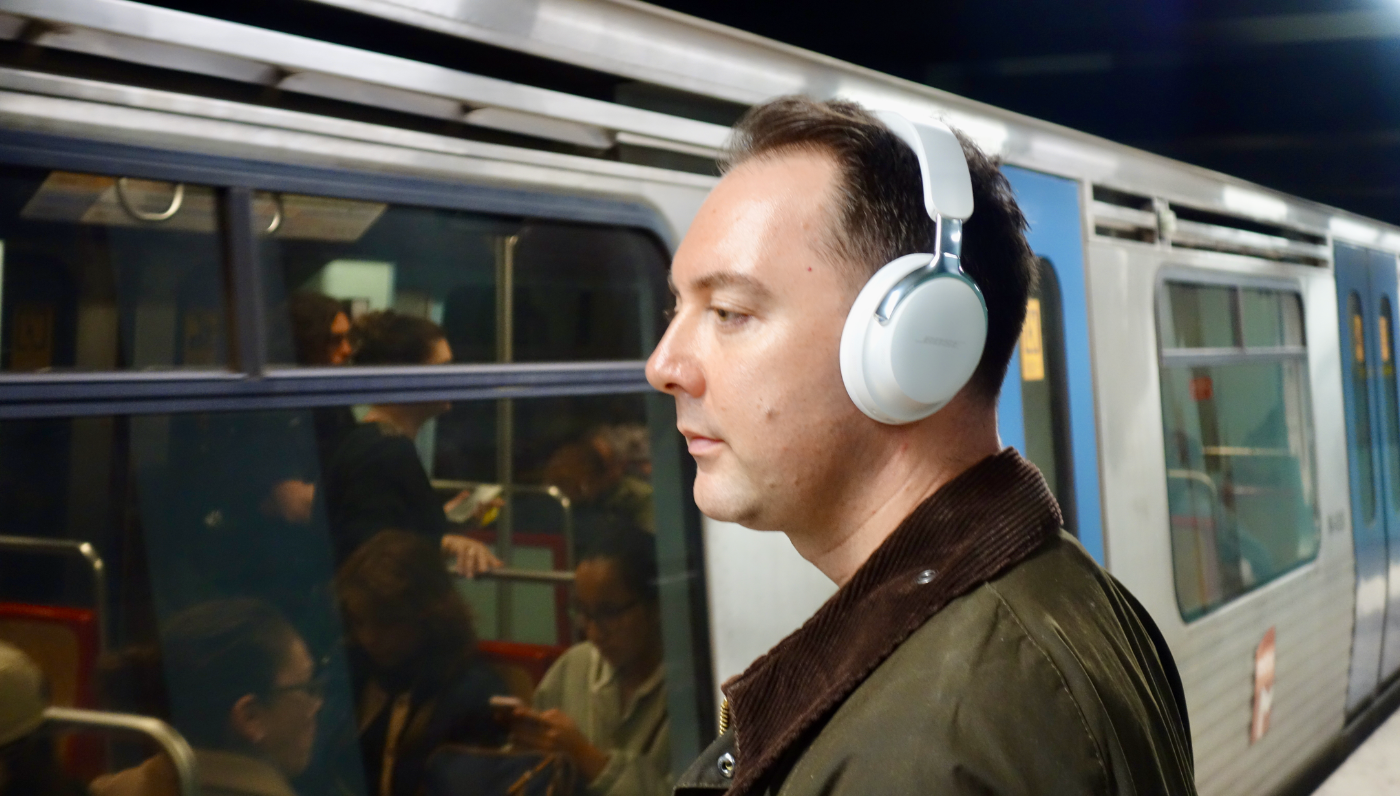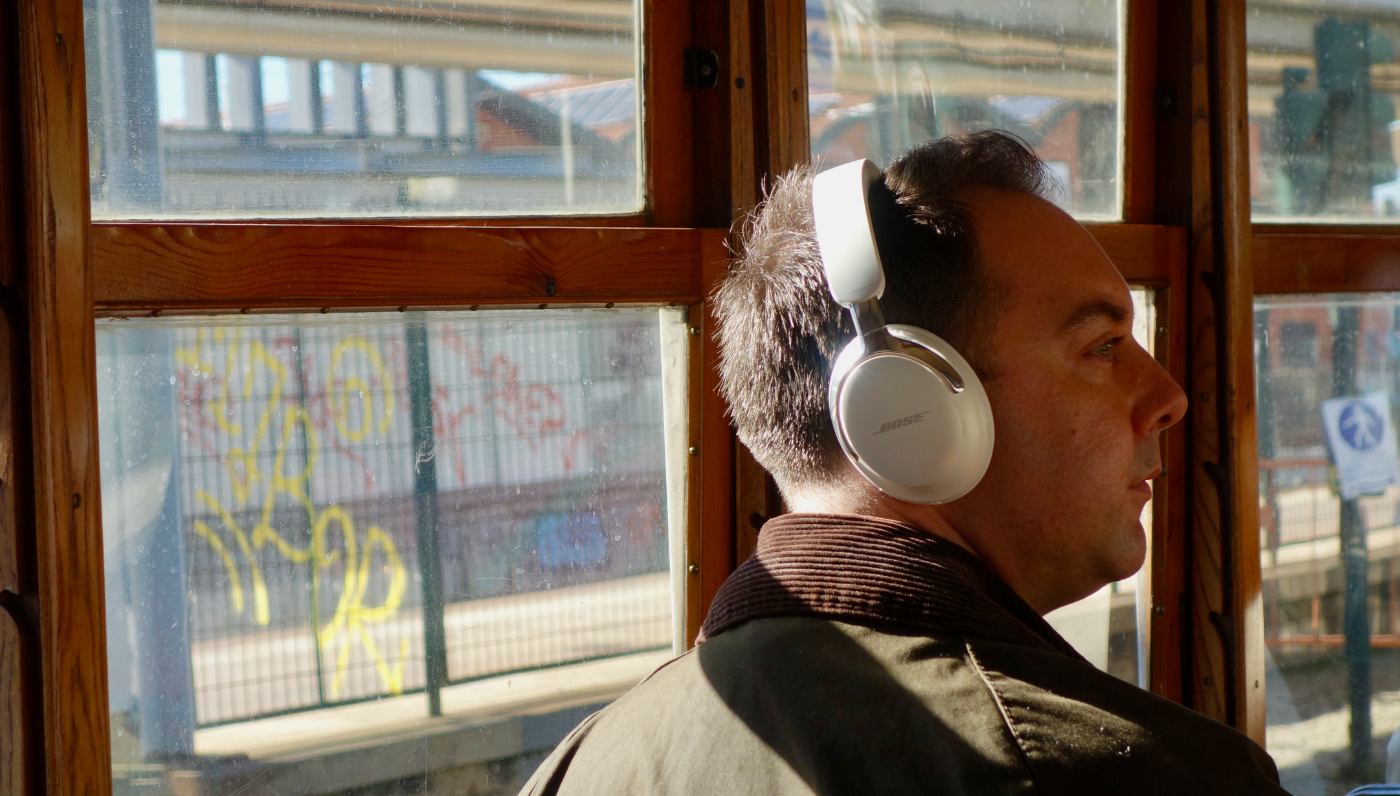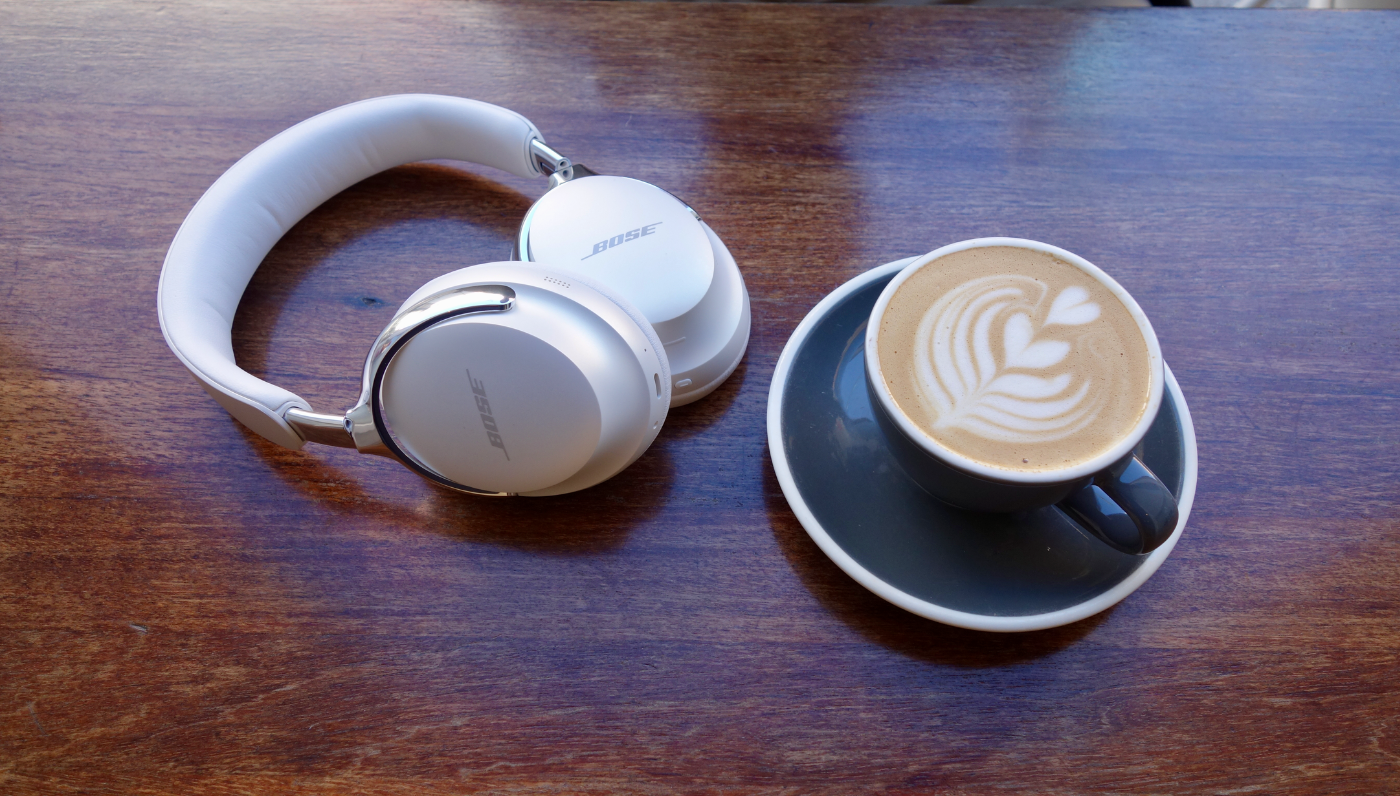
From a rattling BA 777 to the Lisbon metro at 96 decibels, I stress-test Bose’s new flagship to see if it can return his nervous system in one piece.
Everyone’s ears, heads and preferences are different. I’m writing this from the perspective of a daily Lisbon commuter who cares more about silence, comfort and sanity than perfect audiophile neutrality.
I agreed to test the Bose QuietComfort Ultra Headphones (2nd Gen) because I wanted to know one thing: can they actually shut up the Lisbon metro and beloved Tram 28 long enough for me to drink a flat white in peace?
A normal rush hour for me is metro brakes screaming into Marquês de Pombal, the tram shrieking towards Santos, then Neighbourhood café, with the journey soundtracked by drilling for a metro extension and new hotels. I’d quite like my nervous system to still be attached on arrival.
Bose sent me the QuietComfort Ultra 2nd Gen for review. They don’t get to see this before it’s published, and there was no requirement to be positive. The upside is: it finally gave me an excuse to test whether all the talk about improved ANC, the new Immersion, Quiet and Aware modes, plus tricks like Cinema Mode, aptX Adaptive and USB-C audio actually matters when you’re commuting in a busy Lisbon carriage.
On paper, these are supposed to be Bose’s strongest ANC yet: adaptive, personalised, smoothing out sudden spikes of noise, with 30 hours of battery and cushions soft enough to sleep in. Bose claims “seriously plush.” Lisbon would decide.
Last year I reviewed the first-generation Bose QuietComfort Ultra headphones from a very different vantage point: eight hours on a rattling BA flight to Antigua, their noise cancellation turning an ageing 777 into something closer to a floating library. Those originals already felt like peak Bose: warm, forgiving sound; ANC that flattened the hypnotic hum of long-haul; cushions soft enough to forget you were wearing them. They’ve been my default travel pair ever since.
What I respect about Bose is they aren’t a brand that churns out a new flagship every six months. It’s why this second generation is interesting. When they do release a follow-up, it tends to be an adjustment rather than a gimmick. Promises of stronger, more adaptive ANC, tidier Bluetooth and multipoint, new tricks like Cinema Mode on top of the existing Immersive Audio, and now lossless USB-C listening. On paper, this should be a refinement of a very good thing, not a reinvention. The question, at least for me, was whether any of that would matter off a plane and inside Lisbon’s daily noise.
This isn’t a lab review. If you want EQ graphs and house curves, there are places for that. This is a field test: can these headphones make Lisbon quieter?

The Bose QuietComfort Ultra Headphones (2nd Gen) are closed-back, around-ear (circumaural) cans with removable protein-leather cushions and an adjustable headband in plastic and aluminium.
They offer adjustable ANC with Aware, Quiet and Immersion (spatial) modes. They boast solid call mics and Bluetooth 5.4 with multipoint and SBC/AAC/aptX Adaptive support, plus wired and USB-C audio for lossless listening. Expect around 30 hours of battery (less with Immersion) and a compact fold into a small case with both USB-C and jack cables in the box.
The Bose Music app gives you three core modes: Immersion (ANC plus spatial), Quiet (full noise cancelling) and Aware (transparency for hearing what’s around you), along with ANC level and EQ tweaks.

I passed through the turnstiles at Marquês de Pombal with Desert Island Discs already playing. A perfect blend of conversation and music to test these headphones in all the right ways. My Apple Watch regularly clocks the carriages at 80–96 decibels. It’s the usual mix of steel, shriek, and often a one-man band and his parrot working their way through the carriages.

This is where most ANC headphones give up. Low-frequency rumble is easy; high-frequency shriek is an enemy of physics. Bose’s QuietComfort Ultra 2 promises “our best noise cancelling,” helped along by CustomTune, which quickly measures your ear canal and tweaks the ANC to fit.
The Bose QuietComfort Ultra 2 did something unexpected. In Quiet mode – Bose’s full-fat setting – the low-end roar collapsed instantly, like closing the café door behind you and realising how loud the street had been. The mid frequencies softened too. Lauren Laverne’s voice stayed right where it should be. But the real test was the high-pitched brake squeal, that thin, metallic cry the metro makes when it pulls into each station.
The Bose QC Ultra 2 didn’t erase it – nobody has solved that – but they pushed it into another room. It went from “inside my skull” to a faint suggestion behind glass. Not entirely gone, but calmed.
During the ride to Cais do Sodré, the Bose smoothed the soundscape into something more neutral. Unlike the first-generation Ultras, you can feel the ANC and ActiveSense doing their quiet admin in the background, trimming spikes before they reach you. I could hear station announcements if I wanted to, but they no longer stabbed through music. The biggest difference didn’t feel technical but physiological: no live translating Portuguese tannoy announcements into English, just me, Lauren Laverne and, this time, Danny Dyer’s Desert Island Discs.

The tram is worse and better at the same time. Worse, because the noise is still metal on metal with the jostling of a 1930s chassis clattering its way down Avenida 24 de Julho. Better, because it’s honest: you can hear the whole machine at work, the motor pushing, the wheels catching, the chassis complaining. Just a city tram doing its job.
But the QuietComfort Ultra 2 held their composure. Between the next-gen noise cancelling, the adaptive ActiveSense filters and CustomTune processing – Bose’s trick that measures your ear shape and auto-adjusts ANC – the system earned its keep here; the headphones read the incoming disruptions and reshaped the ANC around it in real time.
The shrieks flattened; the rattles softened. The old motor pushing under the floor became a dull growl. In Aware mode (Bose’s transparency setting), the French tourists at my shoulder were still easy to follow. In Quiet mode they softened into a low, distant layer behind the music.

Firstly, both QuietComfort Ultra generations are incredibly light. And the around-ear fit and protein-leather ear cushions earned their keep here: they sit around your ears rather than on them, no plasticky stick, no hard edge digging into the temples. Clamp is firm without being vice-like; heat build-up is there, but never reaches “get these off me” levels, even after a commute plus a couple of hours in a café.
The headband spreads weight cleanly across the top of your head. The metal arms glide into place without the cheap rattle of budget pairs or the skin-pinching anxiety when you fold them. And most satisfying, they disappear into the outer pocket of my Barbour.
.png)
Bose has finally fixed one of the biggest irritations of previous models: device switching.
With Bluetooth 5.4 and multipoint on board, moving between iPhone, Apple Watch, MacBook and iPad is now pretty much flawless, unlike the older model. The handover is faster and cleaner, and the voice prompts make it clear which device you’re connected to. Stepping onto the metro, pairing and hitting play was effectively instant.
Toggling ANC or Aware mode on the move is a single press of the physical button, not a fussy gesture, and the mics do a solid job of keeping calls intelligible over background noise. Transparency mode makes it easy to order a flat white without raising your voice. Lay the cups flat on a table and they power themselves down and disconnect, a nice iteration that stops you quietly burning the battery in your bag – or Barbour, in my case.

By the time I reached Neighbourhood Café Santos, I was relaxed and ready for my flat white.
When I turned on Quiet mode inside the café, the room gently receded two rooms away. Flicking into Immersion adds the spatial processing on top, but for everyday café life I kept coming back to plain Quiet. Like sitting near a busy kitchen with the door almost closed. Danny Dyer’s life story on Desert Island Discs moved closer. The ANC pressure (the “eardrum suck” some people feel) was there for the first five seconds, then gone.
Warm, round, controlled. Not the brightest, sharpest or most analytical, but musical, forgiving, and easy to listen to for hours. The person these are made for cares more about feeling relaxed than hearing the exact decay of a hi-hat, and their lightweight build only doubles down on that use case.
Immersion mode and Cinema Mode are fun on Netflix and Apple TV, less essential on Spotify. Cinema Mode in particular works best when you’re watching something dialogue-heavy; it nudges voices forward without turning everything else to mush. AptX Adaptive is a win if you care about wireless quality on a compatible phone or dongle, and USB-C audio covers you for proper lossless listening at a desk.
At this level, rivals are less about “better” and more about temperament. Sony is for people who like to tinker and feel the kick drum in their chest. Bowers & Wilkins is for those who want their headphones to match the coffee table books. Bose is for commuters and travellers who just want the city to back off a bit. What I mean by this is the noise cancellation, combined with how light the Ultras are, makes them very hard to beat at this price point – currently at £399.95 (normally £449.95) via Bose.
If you already own the first-gen Ultras and they’re still going strong, don’t rush. On my pair, the only casualty since December 2023 has been one split ear cushion.
But the cleaner switching, better noise cancellation and USB-C audio make these worth considering if you’re new to the brand – or if your originals are starting to show their age.
The second-generation Bose QuietComfort Ultra are very much Bose doing what Bose does best: confident sound, seriously strong noise cancelling and all-day comfort. The Guardian hands the outright ANC crown to Sony’s WH-1000XM6, but for me these are close enough that it stops mattering. In return, you get what are arguably the most comfortable over-ears in this tier.
They fold down small, run for around 30 hours on a charge, and feel like a long-term commuter companion rather than a throwaway gadget. I’m all for that.